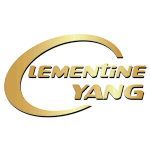European Aristocratic Wig Culture and Chinese Tang Dynasty Hair Bun are two fascinating historical hair trends that showcase the unique beauty standards and fashion preferences of their respective cultures. Let's delve into the differences between these two iconic styles.
What is European Aristocratic Wig Culture?
European Aristocratic Wig Culture emerged in the 17th and 18th centuries as a symbol of wealth, status, and fashion among the European elite. Wigs were often made from human or horse hair and styled in elaborate designs to signify social standing. These wigs were worn by both men and women, with intricate curls, braids, and decorations.

What is Chinese Tang Dynasty Hair Bun?
On the other hand, the Chinese Tang Dynasty Hair Bun was a popular hairstyle during the Tang Dynasty (618-907 AD) in China. This hairstyle involved twisting the hair into a bun at the top of the head, often adorned with beautiful accessories like flowers, ribbons, or hairpins. The Hair Bun was a symbol of elegance and femininity in Chinese culture.

Key Differences
One of the key differences between European Aristocratic Wig Culture and Chinese Tang Dynasty Hair Bun is the materials used. While European wigs were typically made from human or horse hair, Chinese Hair Buns were created using the individual's natural hair, showcasing a different approach to hairstyling.
Additionally, the styles themselves differed significantly. European wigs were elaborate, voluminous, and often powdered or styled with intricate decorations, reflecting the opulence and grandeur of the aristocracy. In contrast, Chinese Hair Buns were more understated, focusing on simplicity, elegance, and natural beauty.


Cultural Significance
Both European Aristocratic Wig Culture and Chinese Tang Dynasty Hair Bun held significant cultural meanings within their respective societies. In Europe, wigs were a symbol of social status, wealth, and fashion trends, with different styles indicating specific ranks or professions. In China, the Hair Bun represented traditional values of modesty, grace, and femininity, reflecting the cultural ideals of the Tang Dynasty.
Overall, European Aristocratic Wig Culture and Chinese Tang Dynasty Hair Bun are two distinct hairstyles that offer a glimpse into the diverse beauty standards and cultural practices of their respective time periods. Whether elaborate and extravagant or simple and elegant, these historical hair trends continue to inspire and fascinate people around the world.

